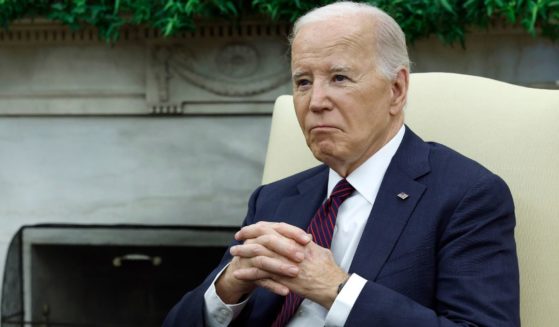The County That Was Too White
Tucked in the westernmost corner of the state, Chautauqua County is not what comes to mind for most people when they think of New York. In many ways, the county has more in common with the Midwest than it does Midtown Manhattan.
Lake Erie dominates the northwestern border of the county. From its shores the landscape rises gently, flattening out into farmland that is passed down from one generation to the next. A slightly steeper ascent inland leads to wooded hills that teem with hunters when the season is right.
As in most of its Rust Belt neighbors, there is an inescapable sense that Chautauqua County’s best days are somewhere in the past, if not the distant future. Its population has declined every decade since peaking in 1970. Two small cities anchoring the north and south of the county and an array of even smaller towns scattered in between add up to a population of just over 125,000.
You can see why I was more than a little surprised to come across Chautauqua, the county in which I was born and have lived most of my life, featured prominently in an NBC News article this week.
It’s extremely rare for the happenings of our unknown county to make national news. Even in this case, it wasn’t anything happening in the county that drew NBC’s attention, but rather what had happened in Albany and Washington, D.C.
The administrations of two Democrats — President Joe Biden and Gov. Andrew Cuomo — worked together to select four sites in New York state to set up “federally supported” COVID-19 vaccination sites.
The White House initially used the Centers for Disease Control and Prevention’s “Social Vulnerability Index” to determine ideal locations. The index uses criteria such as household income and the percentage of elderly residents to determine how vulnerable a region is to natural disasters and disease outbreaks.
Using that index, Chautauqua County was flagged by the Biden administration as a prime candidate for a vaccination site. With one of the lowest median household incomes in the state and an aging population, it’s no surprise that Chautauqua County scored high on the vulnerability index.
But New York state officials weren’t happy with the suggestion from the White House, according to NBC. They argued that Chautauqua County would not be a good location for one of the four vaccination sites.
Why were the people who have been lauded by the establishment media for “trusting the science” and “listening to the data” so fervently objecting to findings of a formula that has been in use for decades?
The answer is disturbingly simple: As far as the Cuomo administration was concerned, the residents of Chautauqua County were born with the wrong skin color.
Despite its having one of the highest percentages of residents living in poverty in the state, officials were concerned that Chautauqua County was too white (93.6 percent of its residents are white, according to Census Bureau estimates). According to NBC, state officials told the White House that “there were better places than Chautauqua to achieve the White House goal of vaccinating more black and brown people.”
The Biden administration was apparently convinced by that logic because it quickly backed off and went along with the state’s suggestion. ‘The state prevailed,” an official familiar with the discussions told NBC.
With Chautauqua County relegated to the scrap heap, officials selected Erie, Monroe, Albany and Westchester counties for the vaccination centers, which are scheduled to open in early March.
Each of the counties is considered much less vulnerable to disease than Chautauqua, according to the CDC’s index. But, most importantly to decision-makers in Albany and D.C., all four counties have a much smaller percentage of white residents than Chautauqua.
When news of the racially motivated selection process broke, Chautauqua County officials were caught completely off guard.
“We had no idea,” County Executive P.J. Wendel told the Observer in Dunkirk. “I’m very disappointed. It was all news to us.”
Wendel also called the apparent politicization of the vaccination process “very unfortunate,” adding, “We’re not a political pawn.”
Republican U.S. Rep. Tom Reed, whose district includes Chautauqua County, issued a more forceful statement on the matter.
“Governor Cuomo’s decision to unilaterally deny Chautauqua County a center has left an entire swath of Western New York without direct access to a federal or state vaccination site. These actions aren’t just misguided — they are plain wrong because they directly jeopardize lives,” the congressman said.
Reed also pointed to the CDC data that officials ignored: “Communities like Chautauqua County are underserved and chronically overlooked by Albany. In fact, the federal government and CDC’s own data demonstrated the area deserves a vaccination site.”
When asked for comment, Cuomo’s office sent this statement to The Western Journal:
“FEMA and the CDC set forth criteria for which counties and communities were eligible based on social vulnerability index and vaccination rates and other factors, and dozens of locations across the state met those criteria — we wish we had the supply to do a site in each.
“It is false any plans for a mass vaccination [site in] Chautauqua County were canceled — the state is unaware of any such plans for such a site. None existed. New York State selected areas that best fit the criteria for increasing equitable vaccination access in predominately minority communities where access is lowest, hesitancy rates are the highest, and vaccination rates are below average.
“We look forward to continuing to partner with local health departments and providers as we explore all options to get more shots in arms faster as the federal government increases the supply of vaccines.”
At first glance, the statement may read like a full-throated denial, but a more nuanced examination reveals something different.
Rather than addressing the claims of the NBC article, Cuomo’s office seems to have constructed a straw man argument for itself to deny. The statement is carefully worded to deny that “plans” for a vaccination site in Chautauqua County ever existed. The NBC article never suggests that plans were made, only that Chautauqua County appeared near the top of a list of sites and New York state officials convinced the White House it shouldn’t be considered.
The Western Journal pointed this out to Cuomo’s office and asked whether it also denied this version of the story, but is yet to receive a response.
When reached for comment regarding the statement from Cuomo’s office, NBC News told The Western Journal it stands by its reporting.
The statement also claims the state prioritized areas with lower vaccination rates (specifically “below average”) when deciding on locations. Maybe the governor’s office forgot that county-by-county vaccination rates are published on the state’s own website, or maybe it assumed we wouldn’t find them. Either way, the numbers don’t look good for that explanation.
All four counties that were selected have vaccination rates higher than the state’s average of 12.6 percent. Chautauqua County, on the other hand, clocks in at 11.5 percent.
We’ve already seen that, even though their statement claims they did, state officials did not place a heavy emphasis on locations that were most socially vulnerable and had the lowest vaccination rates. That leaves just one other criterion: “Predominantly minority communities.”
It might sound like a noble thing to prioritize regions with heavily minority populations, but there is a flip side of that coin: It necessitates the deprioritizing of heavily white areas, even when they are among the poorest and most vulnerable.
It’s almost as if treating people differently based on the color of their skin is a terrible practice that should have ended a long time ago.
Truth and Accuracy
We are committed to truth and accuracy in all of our journalism. Read our editorial standards.











